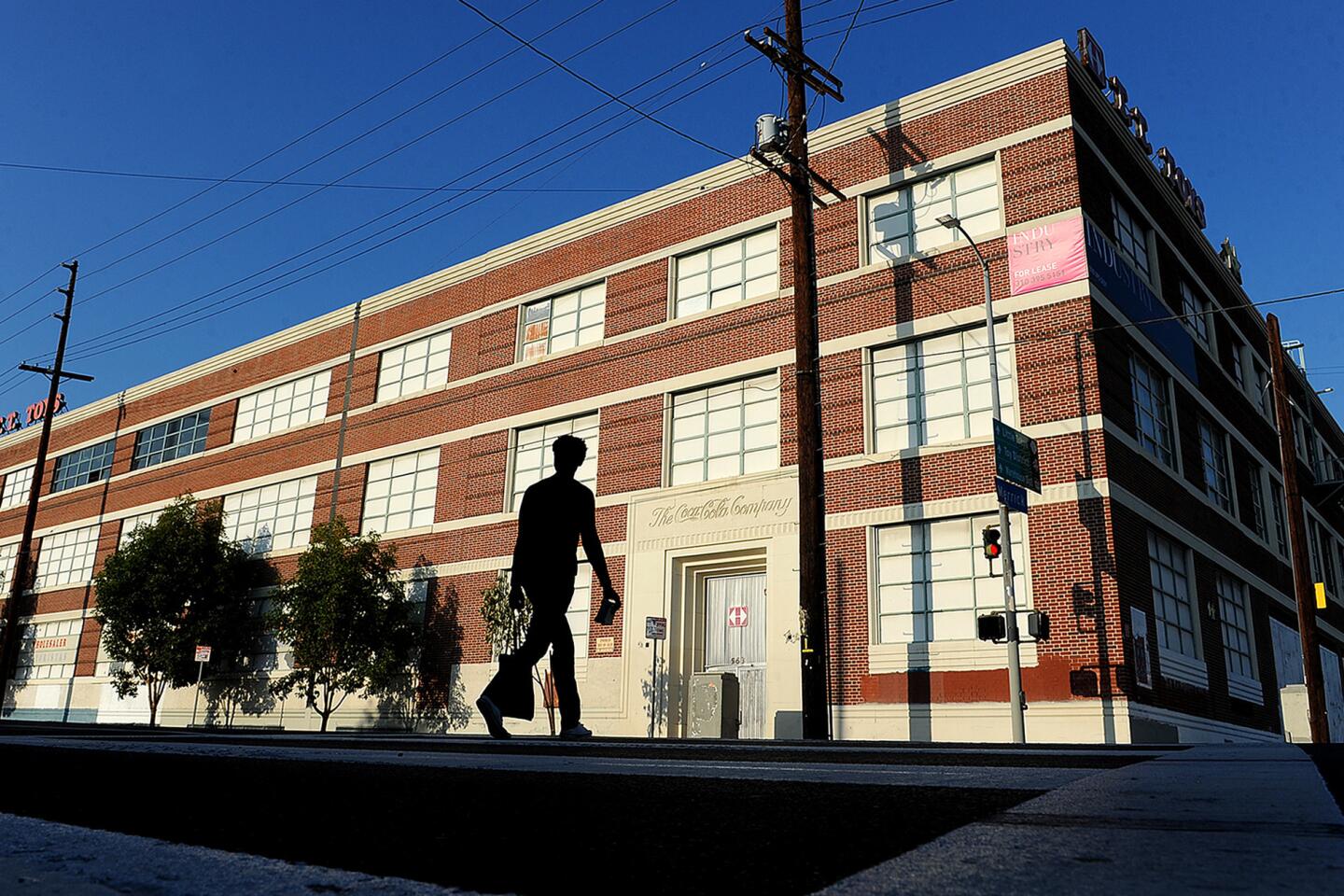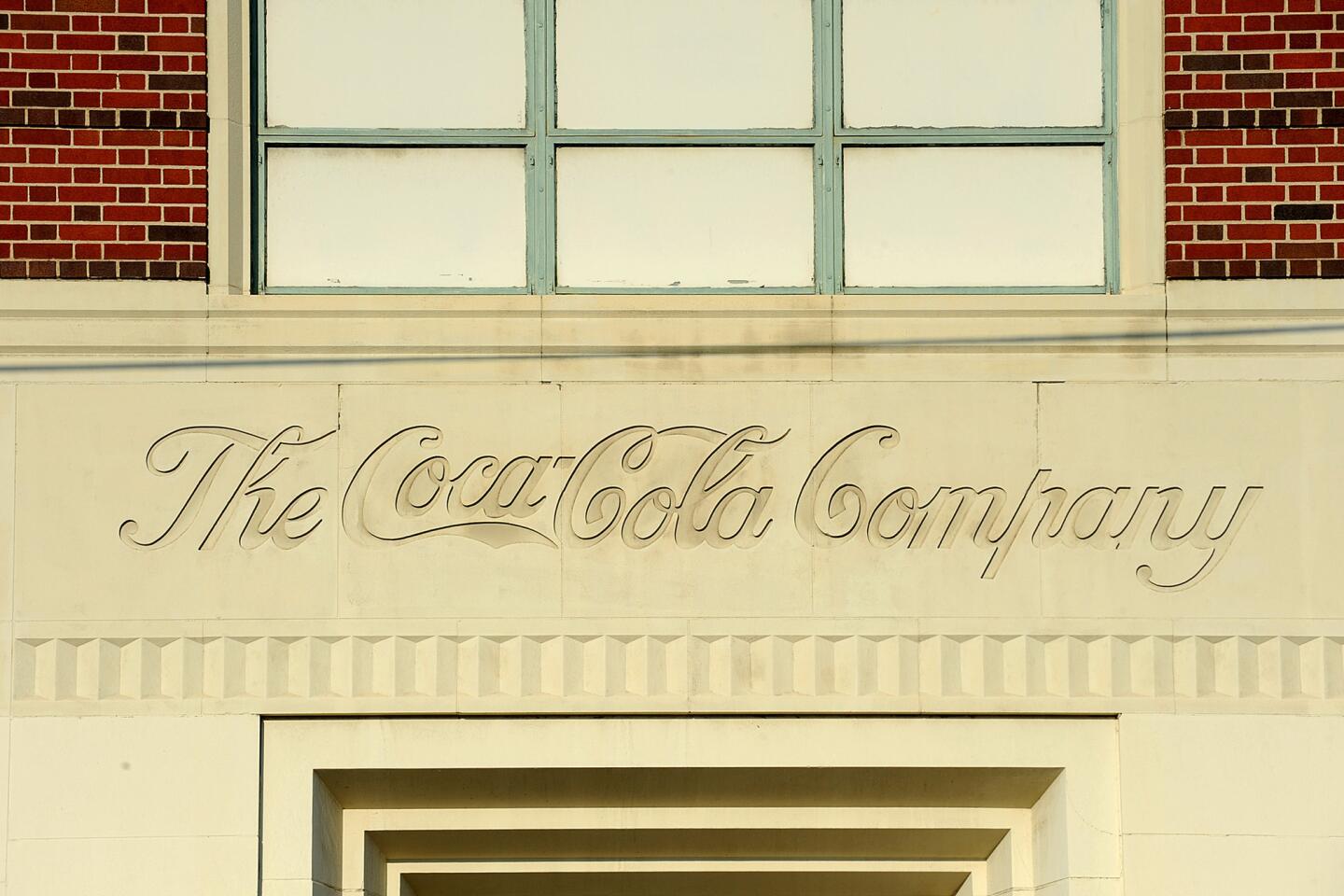Old Coca-Cola building in L.A. to be refreshed as plush office complex
A century-old Coca-Cola manufacturing plant in a formerly run-down section of downtown Los Angeles is about to pop as a plush new office and retail complex.
The elaborate makeover of the three-story brick-clad building most recently used as a toy business warehouse underscores the rising demand for nonconventional office space and the emergence of the Arts District as a desirable neighborhood for residents and white-collar businesses.
Rents at the complex called Fourth & Traction are expected to easily surpass those charged by landlords of many of downtown’s most prominent skyscrapers as growing firms in such fields as technology, entertainment and fashion continue to seek out offices that aren’t meant to cater to staid corporate tastes.
------------
FOR THE RECORD:
Business articles: In some copies of the Nov. 13 Business section, a production error caused an incorrect page to be printed in place of Page B6. Three articles from Page B1 that were supposed to continue on Page B6 can be found in full online: “A sweet future for old Coca-Cola site”: latimes.com/cocacola “Southland housing market mellowing”: latimes.com/housing “New rules target prepaid cards”: latimes.com/prepaid —
------------
In a show of confidence in the so-called creative office market, the developers paid $19 million for the old soft-drink facility and plan to spend at least an additional $15 million in an effort to make it into a well-appointed showplace with a historic vibe.
“People like a sense of nostalgia,” said developer Drew Planting of GPI Cos., a Los Angeles real estate firm that owns the building with New York investors Atlas Capital Group and Square Mile Capital Management.
Many tenants also like structures originally used for manufacturing because they often have high ceilings, more natural lighting and different windows than are found in typical modern offices, he said.
“It has to have soul, history and architectural vernacular,” Planting said of the ideal historic building. “You can’t replicate that.”
The location at 4th and Merrick streets certainly comes with a past. Merrick is a brief extension of Traction Avenue, a former street car route connecting downtown’s old industrial district to the city. The former Coca-Cola building is a stone’s throw from an enormous former Santa Fe railroad dock that is now an elite architecture school.
Its neighbors include several other old industrial buildings that have been turned into housing, shops, bars and restaurants. The sinuous-looking, 438-unit One Santa Fe apartment complex is being completed nearby.
In 1915 The Times reported that Coca-Cola Co. was constructing a “commodious” new home for its operations, replacing an older facility on San Pedro Street.
“This is to be the headquarters for the company’s Pacific Coast business and for its export trade in the Hawaiian Islands and Old Mexico,” The Times said.
Syrup made using Coca-Cola’s secret recipe was produced at the plant and shipped out for bottling or fountain use. The plant was expanded in the 1930s and again in the 1960s. Coca-Cola sold the building in the 1990s.
The plans by architecture firm HLW International call for adding a 300-space garage to the property. The basement and first floor are to be retail space for rent to such users as a gym, shops and an upmarket restaurant.
A new entryway will be created for the restaurant on the east end of the building, said Robert Cohen of RKF, the brokerage searching for retail tenants.
The two upper floors will be converted to office space, and a glass-enclosed penthouse will be added to the roof. The penthouse will be surrounded by a landscaped rooftop deck with seating, a fire pit and an outdoor kitchen.
“It’s going to be an indoor-outdoor office experience,” Planting said.
The fact that the 150,000-square-foot project is being built on “spec” — no tenants have been signed — demonstrates the upward momentum of growth in the Arts District, said real estate broker Carle Pierose of Industry Partners, the firm searching for office tenants for the building.
“We used to have to bring the tenants first,” before office construction would begin, he said.
Most of the development in the Arts District in recent years has been housing for the well-heeled, Pierose said. The average annual income for neighborhood residents is $120,000.
Interest in the former Coca-Cola building has so far come mostly from technology and fashion firms, he said. When completed next year, the property will join several others that are bringing street life to the Arts District.
“First it was one lily pad, then another,” Pierose said. “Now you are seeing it fill in and it will become a lot more walkable.”
Twitter: @rogervincent
More to Read
Sign up for Essential California
The most important California stories and recommendations in your inbox every morning.
You may occasionally receive promotional content from the Los Angeles Times.










